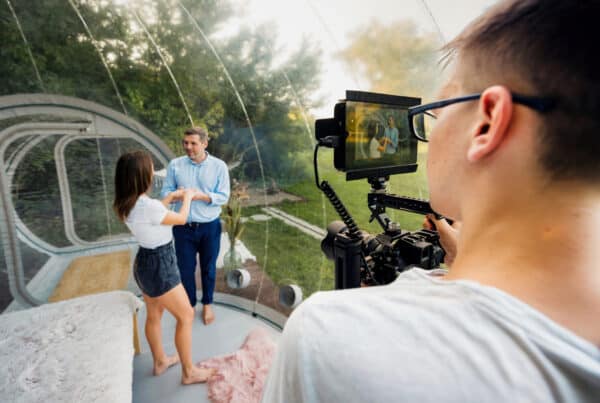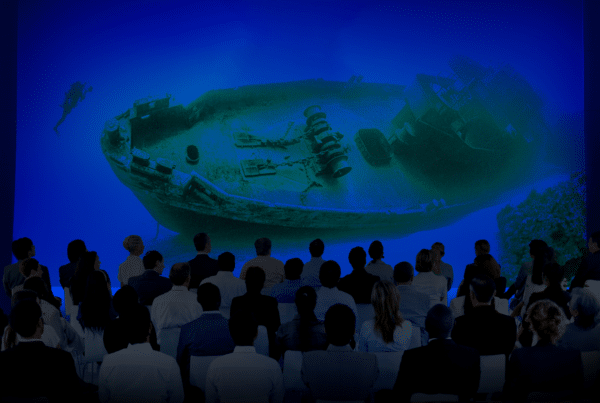Introduction
In today’s digital era, the way we explore and experience spaces has dramatically evolved, thanks to advancements in technology. One of the most significant developments in this realm is the advent of 360 virtual tours. These immersive, interactive experiences allow users to explore environments from all angles, providing a sense of presence and engagement that traditional media cannot match. Whether it’s for real estate, tourism, education, or entertainment, 360 virtual tours have become an essential tool for showcasing spaces and places. This comprehensive guide delves into the concept of 360 virtual tours, their history and evolution, and the myriad benefits they offer.
Overview of 360 Virtual Tours
What are 360 Virtual Tours?
A 360 virtual tour is a digital simulation of an existing location composed of a sequence of 360-degree images or videos. These tours provide an interactive experience where users can look around in all directions, offering a complete view of the surroundings. Unlike traditional photos and videos, which are limited to specific angles, 360 virtual tours allow users to navigate through a space as if they were physically present, enhancing their ability to understand and appreciate the environment.
History and Evolution of 360 Virtual Tours
The concept of 360 virtual tours has evolved significantly over the past few decades. Here’s a brief overview of its history and development:
Early Beginnings
The roots of 360 virtual tours can be traced back to the 1960s and 1970s when panoramic photography began gaining popularity. Early panoramic images were created using specialized cameras or by stitching together multiple photographs taken from a single viewpoint. These early attempts provided a rudimentary way to view scenes in a broader context but lacked the interactivity of modern virtual tours.
The 1990s: The Birth of Interactive Panoramas
The 1990s saw significant advancements in digital imaging technology, leading to the development of interactive panoramas. Apple QuickTime VR, introduced in 1994, was one of the first technologies to allow users to interactively explore 360-degree images on their computers. QuickTime VR enabled users to pan and zoom within the image, creating a more immersive experience than static photos.
The 2000s: The Rise of Virtual Tours
As internet speeds and digital camera technology improved, the 2000s witnessed the rise of virtual tours across various industries. Real estate, in particular, began adopting virtual tours to showcase properties to potential buyers. Early virtual tours were primarily based on still images stitched together to create a panoramic view. These tours were often embedded in websites, allowing users to explore properties remotely.
The 2010s: Integration of Video and VR
The 2010s marked a significant leap forward with the integration of 360-degree video and virtual reality (VR). Advances in camera technology and VR headsets made it possible to create fully immersive virtual tours. Companies like Matterport and Google Street View revolutionized the industry by offering platforms for creating and hosting 360 virtual tours. These tours provided users with a more dynamic and interactive experience, allowing them to move through spaces and interact with objects in real time.
The Present and Future
Today, 360 virtual tours are more accessible and versatile than ever. They are used across various sectors, including real estate, tourism, education, healthcare, and entertainment. The future of 360 virtual tours looks promising, with continued advancements in VR and augmented reality (AR) technologies expected to enhance the immersive experience further.
Importance and Benefits of 360 Virtual Tours
Enhanced Engagement and Interactivity
One of the most significant benefits of 360 virtual tours is the enhanced engagement and interactivity they offer. Unlike traditional photos and videos, which provide a passive viewing experience, virtual tours allow users to actively explore and interact with the environment. This increased engagement helps users better understand and appreciate the space, making it particularly valuable for industries like real estate and tourism.
Greater Accessibility and Convenience
360 virtual tours provide a convenient way for users to explore locations remotely. This is especially beneficial for individuals who are unable to visit a site in person due to geographical, physical, or time constraints. For example, potential homebuyers can explore properties from the comfort of their own homes, saving time and travel costs. Similarly, tourists can preview destinations before making travel plans, helping them make more informed decisions.
Improved Marketing and Sales
Incorporating 360 virtual tours into marketing strategies can significantly boost sales and conversions. For real estate agents, virtual tours provide a compelling way to showcase properties, attracting more potential buyers and speeding up the sales process. In the tourism industry, virtual tours can entice travelers by giving them a taste of what to expect, ultimately driving bookings and increasing visitor numbers.
Enhanced Learning and Training
The educational benefits of 360 virtual tours are immense. Virtual tours can be used to create immersive learning experiences, allowing students to explore historical sites, museums, and natural wonders in a way that traditional textbooks cannot match. In professional training, virtual tours can simulate real-world scenarios, providing hands-on experience in a safe and controlled environment. This is particularly valuable in fields such as medicine, aviation, and emergency response.
Increased Engagement for Online Content
Adding 360 virtual tours to websites and social media platforms can significantly increase user engagement. Visitors are more likely to spend time exploring interactive content, which can reduce bounce rates and improve overall user experience. Moreover, virtual tours can enhance SEO efforts by increasing dwell time and encouraging social sharing, ultimately driving more traffic to websites.
Versatility Across Industries
The versatility of 360 virtual tours makes them valuable across various industries:
- Real Estate: Showcase properties to potential buyers and renters, highlighting key features and providing a realistic view of the space.
- Tourism: Promote destinations, hotels, and attractions by offering immersive previews that encourage bookings and visits.
- Education: Create virtual field trips and interactive learning experiences that engage students and enhance understanding.
- Healthcare: Provide virtual tours of medical facilities, helping patients familiarize themselves with the environment and reducing anxiety.
- Retail: Offer virtual store tours and product showcases, allowing customers to explore and interact with products online.
Summary and Key Takeaways
Summary
360 virtual tours have transformed the way we explore and experience spaces, offering immersive and interactive experiences that traditional media cannot match. From their early beginnings in panoramic photography to the integration of VR and AR technologies, 360 virtual tours have evolved significantly. Today, they are used across various industries to enhance engagement, improve marketing and sales, facilitate learning and training, and increase accessibility and convenience. The future of 360 virtual tours looks promising, with continued advancements expected to further enhance their capabilities and applications.
Key Takeaways
- Definition: 360 virtual tours are digital simulations composed of 360-degree images or videos, allowing users to explore environments interactively.
- History: The concept has evolved from early panoramic photography to advanced VR and AR integrations, significantly enhancing the immersive experience.
- Engagement: Virtual tours offer enhanced engagement and interactivity, providing users with a more comprehensive understanding of spaces.
- Accessibility: They provide a convenient way for users to explore locations remotely, overcoming geographical, physical, and time constraints.
- Marketing and Sales: Incorporating virtual tours into marketing strategies can boost sales and conversions across various industries.
- Education and Training: Virtual tours enhance learning and training by creating immersive and interactive experiences.
- Industry Versatility: 360 virtual tours are valuable across multiple industries, including real estate, tourism, education, healthcare, and retail.
Conclusion
As technology continues to advance, the potential of 360 virtual tours will only grow, offering new and exciting possibilities for various industries. By staying informed about the latest trends and innovations, businesses and creators can leverage 360 virtual tours to provide immersive, engaging experiences that captivate and inspire their audiences. The journey of 360 virtual tours is just beginning, and the future holds limitless opportunities for exploration and interaction.
Discover the power of 360 virtual tours with our comprehensive guide.
Discover the power of 360° virtual tours with our comprehensive guide! Learn how they enhance engagement, boost sales, and create immersive experiences for businesses and consumers alike. Perfect for real estate, tourism, and more. Contact us today to explore how 360° virtual tours can transform your business!


